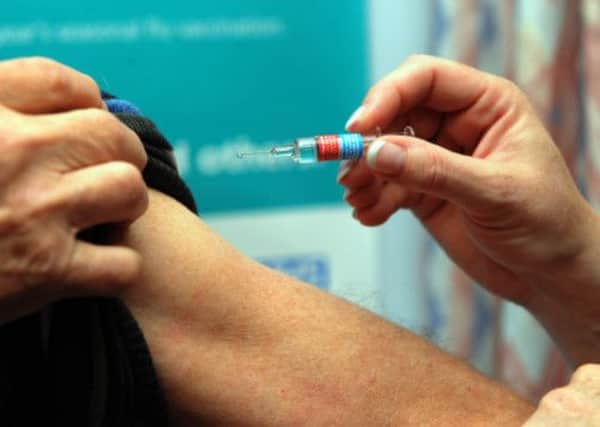Flu jabs can prevent heart attacks, says new study


The vaccine offers protection from heart attacks for people with narrowed arteries, according to a study in the journal Heart. Those with chronic heart disease, such as heart failure, are already offered the yearly jab on the NHS.
But researchers said that UK authorities should now consider extending the programme to everyone aged 50 to 64.
Advertisement
Hide AdAdvertisement
Hide AdA team from Australia set out to examine whether flu is an unrecognised factor in increasing the risk of heart attacks.
They examined hospital data for 559 patients over the age of 40, about half of whom had suffered a heart attack.
Nose and throat swabs and blood samples were taken when the patients were admitted and again four to six weeks later. The results showed one in eight (12.4 per cent) of the heart attack patients had recently had flu, compared with just under 7 per cent in the comparison group. Half of all the patients had had the flu jab that year.
Flu had not been diagnosed in about one in ten of those who had the infection, suggesting it might be missed in hospital patients who turned up with other health problems, the experts said.
While the research showed that flu did not increase the risk of a heart attack, having the jab appeared to be protective. The researchers discovered it cut the chance of having a heart attack by 45 per cent.
Previous research has shown that flu may encourage blood to thicken or prompt an inflammatory response in arteries that are already narrowed, which could lead to a blockage and a heart attack.
The authors, from the University of New South Wales in Sydney, are confident that extending the vaccination programme could have a major impact on public health.
They said: “Even a small effect of influenza vaccination in preventing [heart attacks] may have significant population health gains.
Advertisement
Hide AdAdvertisement
Hide Ad“The potential population health impact of influenza vaccination, particularly in the age group 50-64 years, who are not targeted for vaccination, should be further explored. ”
Thembi Nkala, senior cardiac nurse at the British Heart Foundation, said: “The flu can lead to serious illness, so getting your flu jab is vital if you have, or are at risk of, heart disease.
“It’s why many heart patients who are deemed at high risk are already offered the vaccination as a matter of routine.”
This year, 41 volunteers agreed to be locked in a clinical unit in Cambridgeshire for up to a fortnight while being exposed to the flu virus. They took part in a medical version of Big Brother, to help establish how flu is transmitted
The researchers at Nottingham University’s School of Community Health Sciences were overseeing the research as part of a £7.2 million study.
It is hoped the results, which have yet to be published, will help governments and bodies such as the World Health Organisation decide what protection healthcare workers should be given during flu outbreaks.
Exercise gap between boys and girls
HALF of all seven-year-olds do not get enough exercise – and girls are far less active than boys, research shows.
Only 51 per cent of all seven-year-olds in the UK achieve the recommended hour of exercise every day, with the figure being just 38 per cent in girls, compared with 63 per cent in boys. Half of the age group is also sedentary for an average of 6.4 hours or more every day.
Advertisement
Hide AdAdvertisement
Hide AdResearch, published in the online journal BMJ Open, found children of Indian origin and those living in Northern Ireland are among the least physically active.
Experts, including from University College London examined data for 6,497 children. They said more needed to be done to boost the amount of exercise children were doing, including promoting walking or cycling to school.